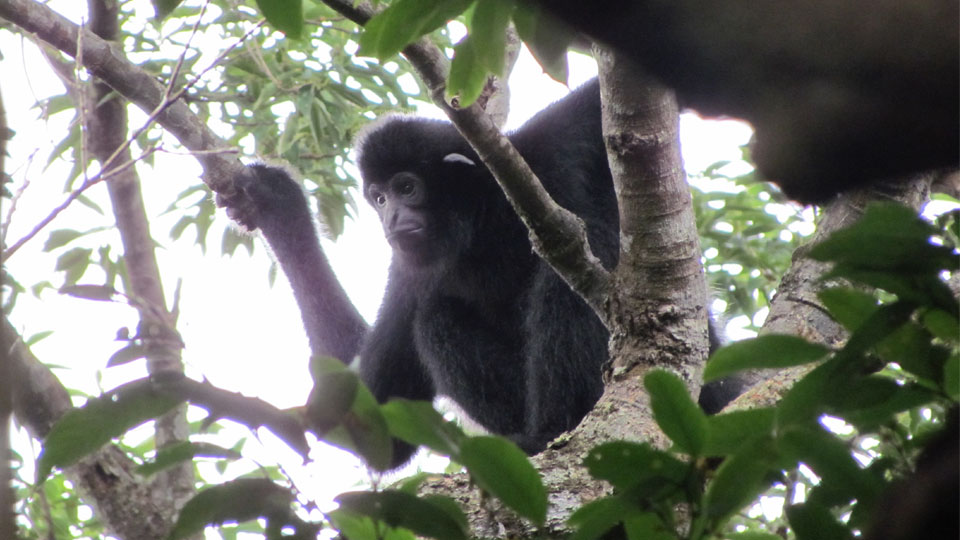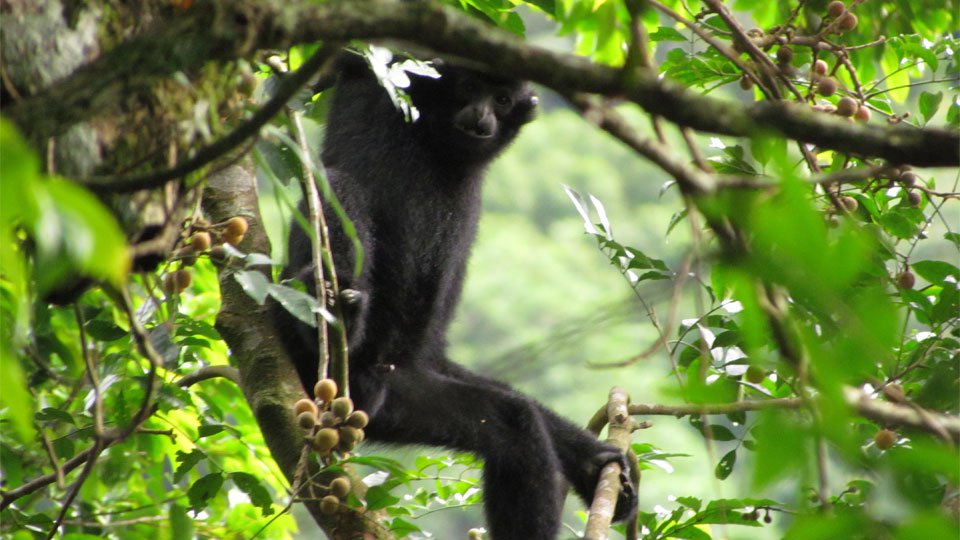The giant panda isn’t China’s only adorable endangered species. The country – or more specifically, a 20-square-kilometer patch of forest in Hainan’s Bawangling National Nature Reserve – is home to the last 26 to 28 remaining members of the word’s rarest primate, the Hainan gibbon.
 Male Hainan gibbons have black fur (above). Female Hainan gibbons have golden yellow fur, while their young have black fur (top image).
Male Hainan gibbons have black fur (above). Female Hainan gibbons have golden yellow fur, while their young have black fur (top image).
New research utilizing Chinese government records dating back to the 17th century has found that the gibbons were once a common sight across half the country. Around 2,000 Hainan gibbons existed in the 1950s, shortly after the Communist Party founded the People’s Republic.
The decline in the gibbons’ population began in earnest about 150 years ago, corresponding with the growth of the country’s human population.

One of the study’s authors, Dr. Sam Turvey of the Zoological Society of London, noted that China’s extensive practice of record keeping not only tracked households for tax purposes but also encompassed natural resources and animals.
The collapse of the Hainan gibbon population, Dr. Turvey notes, “correlates with demographic expansion in China towards the end of the Imperial era and through the 20th century, and the massive increase in deforestation and human population growth through the time of the Chinese Republic and the establishment of the Communist Party."
 Researchers track the elusive Hainan gibbon in the Bawangling National Nature Reserve.
Researchers track the elusive Hainan gibbon in the Bawangling National Nature Reserve.
Although fewer than 30 Hainan gibbons remain, scientists are hopeful that the new research into the apes’ decline can help them draw up a more effective plan for conservation.
Dr. Turvey told the BBC:
"It is an incredible privilege to be able to see gibbons in China in the wild. The Hainan gibbon is such a rare species, but knowing that this species is still hanging on there gives you hope that conservation will be able to bring that population back from the brink."
If the species does become extinct, the Hainan gibbon would be the planet’s first ape to be wiped out due to human actions, the journal Nature noted last year.
SEE ALSO: Xinjiang's 'magic rabbit' is facing extinction - but unlike pandas, they're on their own
[Images via Zoological Society of London]





















0 User Comments